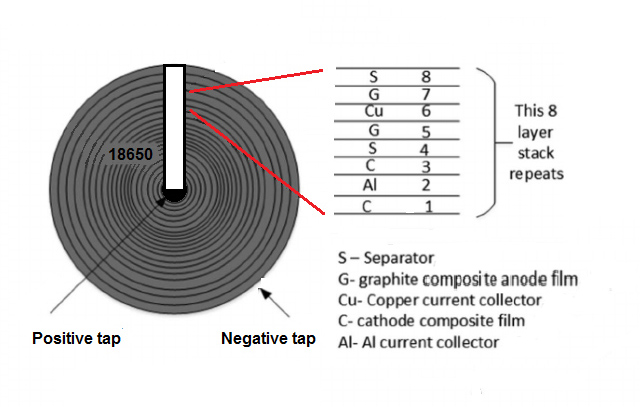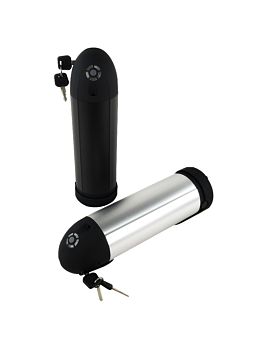Electric bike lithium battery 18650 battery types and assembly
Electric bike lithium battery 18650 battery types and assembly
Most electric bike lithium batteries are made with 18650 battery cells( size: 18mm-diameter * 65mm-height), with different shapes, different voltages and capacities upon different applications. 18650 battery has a variety of types.
Classified by electrolyte material
There are liquid lithium-ion batteries (LIB) and polymer lithium-ion batteries (PLB).
Classified by brands
Seen from the electric bicycle lithium-ion battery in the market, there are many lithium battery brands such as Samsung, Panasonic, Sony, LG, Sanyo,Battemen, and many Chinese lithium battery brands like BYD IT, BAK battery,LISHEN Battery, First battery etc.
Classified by capacity
Generally, we would see 2000mAh, 2200mAh, 2600mAh, 2900mAh, 3000mAh, 3200mAh, 3400mAh, 3500mAh etc.
Classified by the active materials
|
|
Active materials |
Voltage |
Cycle time |
|
1 |
LCO- Lithium Cobalt Oxide (LiCoO2) |
3.60V nominal; typical operating range 3.0–4.2V/cell |
500-1000 (related to the depth of discharge, load, temperature) |
|
2 |
LMO- Lithium Manganese Oxide (LiMn2O4) |
3.70V (3.80V) nominal; typical operating range 3.0–4.2V/cell |
300-700 (related to the depth of discharge, temperature)
|
|
3 |
NCA- Lithium Nickel Cobalt Aluminium Oxide (LiNiCoAlO2) |
3.60V nominal; typical operating range 3.0–4.2V/cell |
500 (related to the depth of discharge, temperature) |
|
4 |
NMC- Lithium Nickel Cobalt Manganese Oxide (LiNiCoMnO2) |
3.60V, 3.70V nominal; typical operating range 3.0–4.2V/cell, or higher |
1000-2000 (related to the depth of discharge, temperature) |
|
5 |
LFP- Lithium Iron Phosphate (LiFePO4) |
3.20, 3.30V nominal; typical operating range 2.5–3.65V/cell |
1000-2000 (related to the depth of discharge, temperature) |
|
6 |
LTO- Lithium Titanate (Li4Ti5O12)
|
2.40V nominal; typical operating range 1.8–2.85V/cell |
3000-7000 |

How do the battery cells be connected to build a big battery? How many cells do you need to build the battery?
Connect the battery cells in series or parallel could increase the battery voltage or get a higher capacity.
Take the 3.6V 3400mAh lithium-ion battery cells as a sample. Connection in series will increase the voltage, 4 series makes 4*3.6= 14.4V, 10 series makes 10*3.6= 36V, 13 series makes 13*3.6= 48V. Connection in parallel will gain a higher capacity. 4 battery cells or 4 groups of cells ( 10 cells in series) assemble in parallel would gain a 4*3400mAh= 13600mAh= 13.6Ah capacity.
So to make a 36V 13.6Ah lithium battery, you need 40 battery cells which are all 3.6V 3400mAh. And kindly noted that the voltage difference of each battery cell should be smaller than 0.05V, or it would affect the lifetime of the battery.
Some electric bikes need a 48V voltage to work with the 48V motor and controller that it should be13 battery cells in series. Then you need to confirm that how many battery cells are limited by the battery pack or battery box to assemble suitable battery groups in parallel.

What is inside a battery?
The answer to “what is inside a battery?” starts with a breakdown of what makes a battery.
There are 6 parts.
1. Container Steel- houses the cell’s ingredients to form the cathode, a part of the electrochemical reaction.
2. Cathode (negative)- A combo of manganese dioxide and carbon, it is the electrodes reduced by the electrochemical reaction.
3. Separator- a Non-woven fibrous fabric that separates the electrodes.
4. Anode (positive)- Maded of powered zinc metal, anodes are electrodes that are oxidized.
5. Electrolyte- Potassium hydroxide solution in water, the electrolyte is the medium for the movement of ions within the cell. It carries the iconic current inside the battery.
6. Collector- Brass pin in the middle of the cell that conducts electricity to the outside circuit.











Sign In
Create New Account